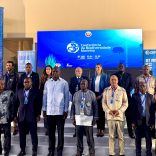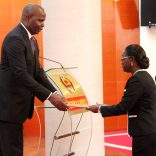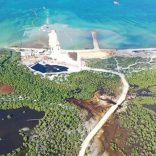Mozambique: President Chapo calls for community- led marine protection and environmental education
Daviz Simango: “It has been made clear that Beira is a cyclone corridor”

File photo: DW
- In an interview with DW, Daviz Simango, the mayor of Beira, one of the areas worst affected by tropical storm Eloise, says that the city has taken a few backwards steps, as it was still recovering from Idai.
Across Southern Africa, the Eloise weather system left at least 15 people dead, including seven in Mozambique, three in Zimbabwe, two in Eswatini, two in South Africa, and one in Madagascar. It caused heavy material damage in central Mozambique, particularly in Beira. About 18,000 people were displaced and a total of 250,000 people were affected, according to the UN.
In an interview with DW Africa about the damage in the city, mayor Daviz Simango says that “it has become clear that Beira is a cyclone corridor”, especially since, less than two years ago, the region was all but destroyed by Idai, the worst cyclone ever experienced in the country.
DW Africa: What is the state of play in Beira?
Daviz Simango (DS): At the moment, the situation is under control. Much of the water that flooded the neighbourhoods has practically gone. The great challenge that exists is with the people who were flooded out. This cyclone brought two peculiarities: one is the wind, which destroyed a lot, and the other is the rain, which started even before the cyclone arrived. The day before the cyclone, we already had a section of the road to Nhangale, a more distant administrative post, cut by flood water. But in general, the situation is under control. Life is gradually returning to normal.
DW Africa: Are the impacts very different from those caused by Cyclone Idai?
DS: Yes, there is a big difference. Idai’s winds were extreme, but this one has another variable, which is the floods. Never in some neighbourhoods has there been as much water as this time. Our drainage ditches were filled with water and we had the same water level on the roads.
DW Africa: What assistance is being given to the affected population?
DS: The primary assistance was to take them to safe places, which is where they are now. There is still a food deficit – the municipality itself does not have the resources to provide such support. There are dedicated institutions and I hope that they will be able to bring some sustenance for our families.
One of the other concerns is the children, who should be writing exams, but schools were flooded, particularly in one district. So, these children will not be able to take exams at the same time as other children.
DW Africa: And how is assisting the population, in the context of Covid-19?
DS: This is another problem. We ended up having two situations: Covid-19 and flooding. You can imagine how difficult it is to manage this. All preventive measures end up being ignored. We already had some very relaxed residents, and now the situation is worse.
DW Africa: And was the municipality of Beira prepared for this situation?
DS: Yes, yes. Since Idai, we are trained in prevention. So much so that the damage – both with Chalane and now with this cyclone – has been reduced through mitigation and prevention.
DW Africa: So, has reconstruction in the context of Idai gone down the drain?
DS: Clearly. The people were rebuilding and have seen what they were rebuilding broken down again. So we did go backwards a few steps. And now it has been made clear that Beira is a cyclone corridor and that we have to brace ourselves more and more, with resilience especially in our homes. Infrastructure must be prepared to withstand the wind.
DW Africa: Has the municipality of Beira considered long-term measures? Do you have a particular project for more resilient homes?
DS: We have our ‘masterplan’, which is a vision that gives us until 2035, and we have already started with part of the integrated projects. We started building resilient housing and resilient neighbourhoods, because our understanding is that the neighbourhood must be resilient and housing must also be resilient. So, at Marada, we took care of the landfills, the streets, the water network, the sewage network, and we are still going to fix the power network. The populations will have more elevated zones and an entire drainage system, and we believe that the population will be protected whatever type of storm comes.
Also read: Young man swept to his death in Beira
The ‘masterplan’ includes a drainage system to allow the water to drain. I believe that the next generation of ditches, which we will build in the second phase with the support of the Netherlands, the World Bank and the KfW of Germany, will improve the situation in the city of Beira.
DAVIZ SIMANGO AVALIA DANOS CAUSADOS PELO CICLONE ELOISE NO PARQUE DAS INFRA-ESTRUTURAS VERDES
Publicado por Conselho Municipal da Beira – CMB em Quarta-feira, 27 de janeiro de 2021












Leave a Reply
Be the First to Comment!
You must be logged in to post a comment.
You must be logged in to post a comment.